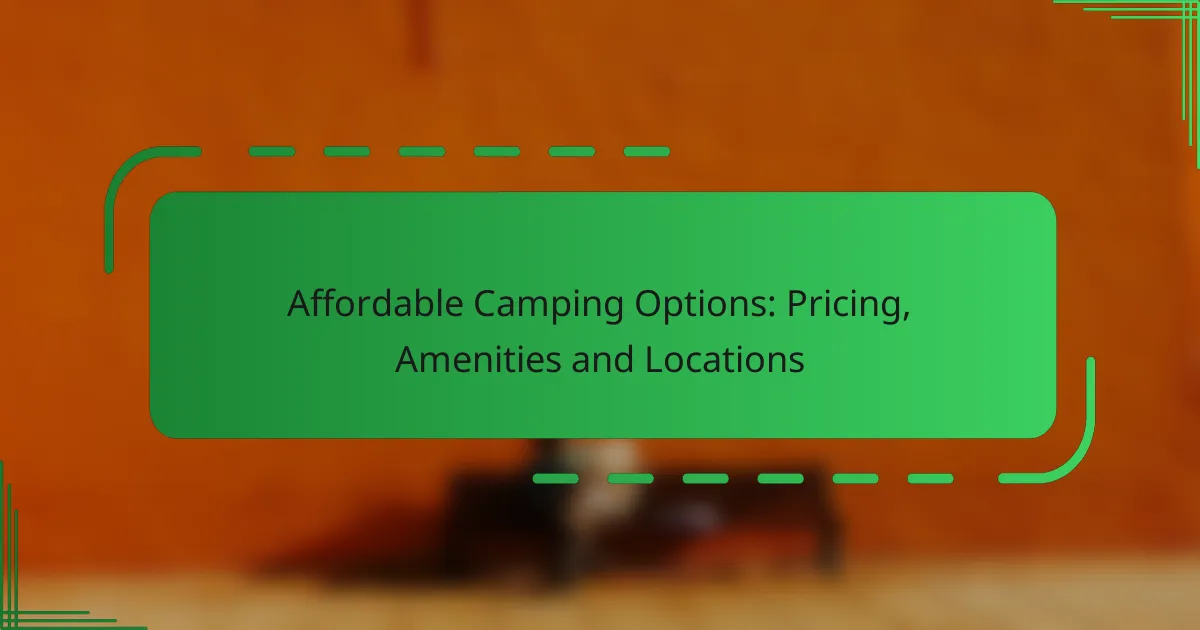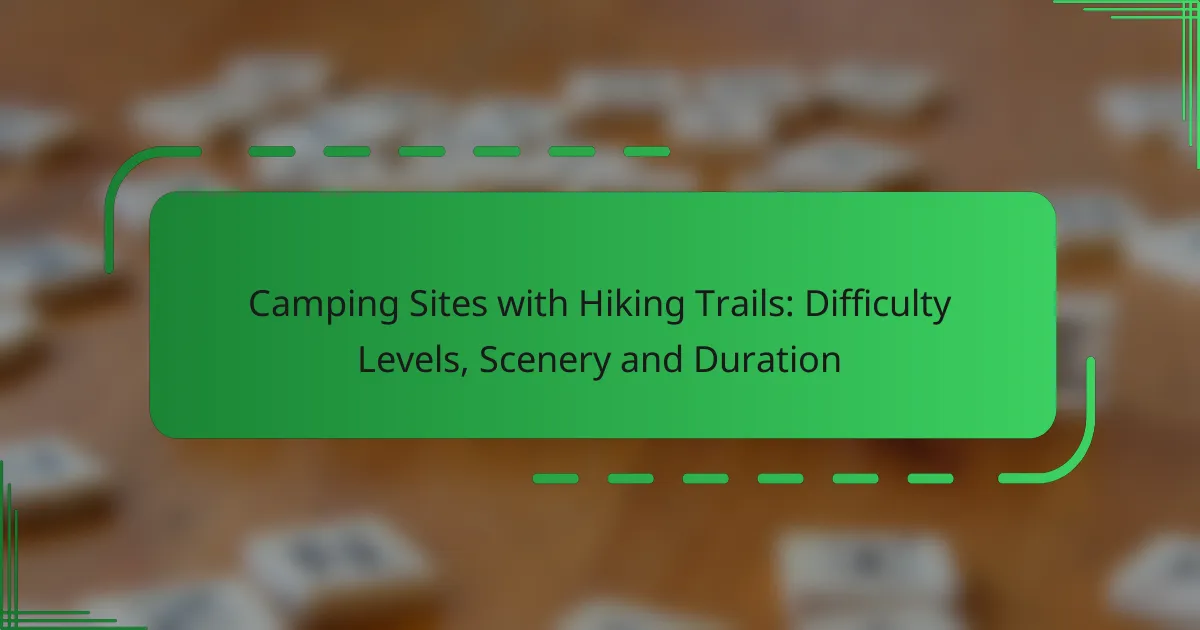Exploring affordable camping options can lead to memorable outdoor experiences without straining your budget. From state parks to private campgrounds, prices typically range from $10 to $100 per night, depending on amenities and location. Understanding the variety of options available will help you find the perfect spot that meets your needs and enhances your adventure.
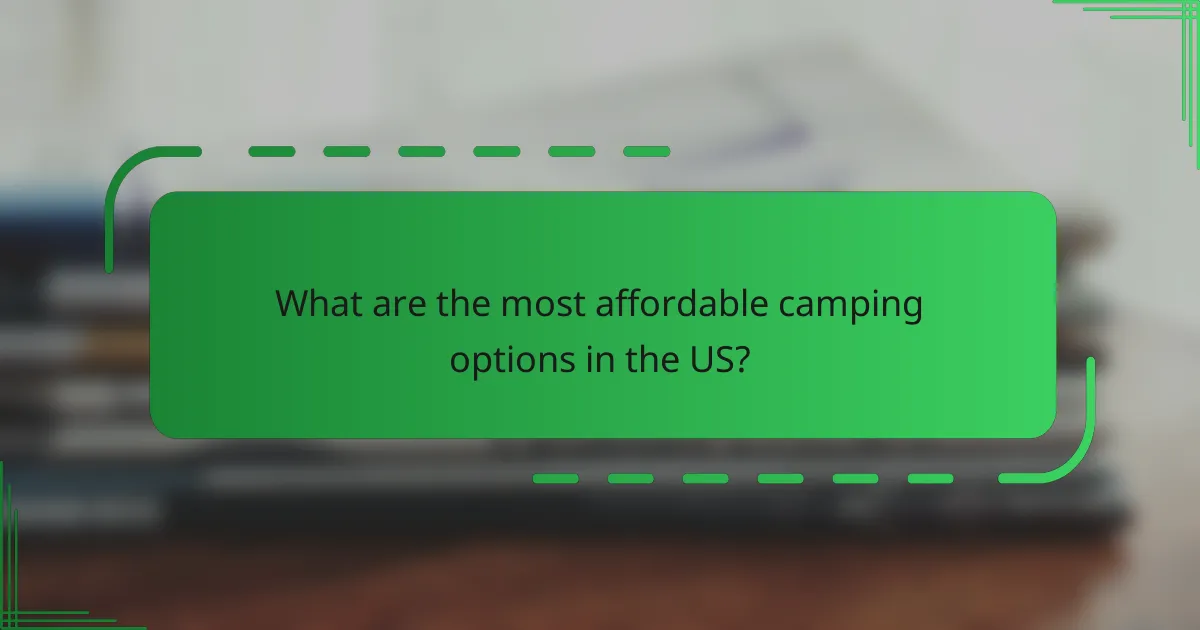
What are the most affordable camping options in the US?
The most affordable camping options in the US include state parks, national forests, private campgrounds, backcountry camping, and RV parks. Each option varies in pricing, amenities, and locations, making it essential to choose based on your budget and preferences.
State parks
State parks offer some of the most budget-friendly camping experiences, often charging between $10 to $30 per night. These parks typically provide essential amenities like restrooms, picnic tables, and fire pits, making them suitable for families and casual campers.
Reservations are usually recommended, especially during peak seasons. Each state has its own regulations and available facilities, so checking the specific park’s website can provide valuable information on amenities and activities.
National forests
Camping in national forests is often free or costs around $10 to $20 per night, depending on the site. These areas provide a more rustic experience, with fewer amenities, but they offer stunning natural landscapes and opportunities for hiking and wildlife viewing.
Many national forests have designated campgrounds with basic facilities, while dispersed camping is allowed in certain areas. Always check local regulations to ensure compliance and safety.
Private campgrounds
Private campgrounds generally range from $20 to $50 per night and often provide more amenities than public options, such as Wi-Fi, swimming pools, and organized activities. These campgrounds can be found near popular tourist attractions, making them convenient for travelers.
While they may be pricier than state parks or national forests, private campgrounds can offer a more comfortable experience. Booking in advance is advisable, especially during holidays and summer months.
Backcountry camping
Backcountry camping is typically free but requires a bit more preparation and knowledge. This option is ideal for experienced campers looking for solitude and adventure in remote areas. Permits may be required in certain locations, so checking regulations beforehand is crucial.
Essential gear, such as a map, compass, and adequate supplies, is necessary for safety. Be prepared for a lack of amenities, as backcountry sites usually offer no facilities.
RV parks
RV parks usually charge between $30 to $70 per night, depending on the location and amenities offered. Many RV parks provide full hookups, including water, electricity, and sewage disposal, making them a convenient choice for travelers with recreational vehicles.
Some RV parks also feature additional amenities like laundry facilities, swimming pools, and recreational areas. Reservations are recommended, especially during peak travel seasons, to secure a spot.
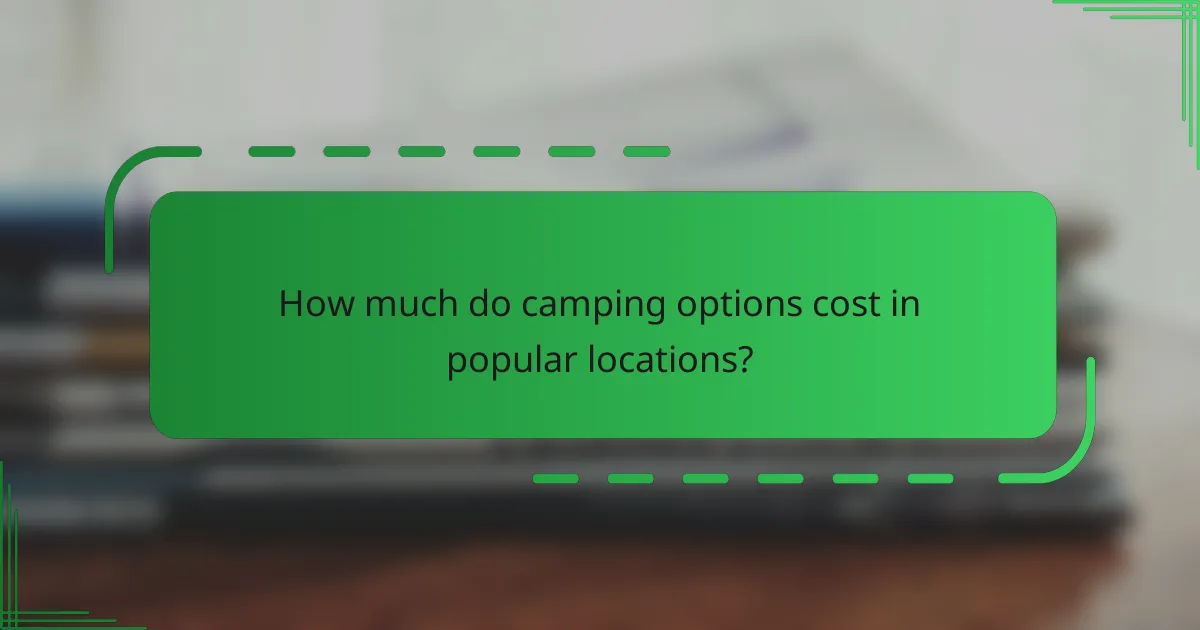
How much do camping options cost in popular locations?
Camping options vary widely in cost depending on the location, amenities, and season. Generally, you can expect to pay anywhere from $10 to $50 per night for basic campsites, while more developed sites with additional amenities can range from $30 to $100 or more.
Average costs in California
In California, camping costs can range from $20 to $70 per night for standard campsites. Popular areas like Yosemite or Joshua Tree may charge higher fees, especially during peak seasons, with some sites exceeding $100 per night.
Consider booking in advance, as many desirable locations fill up quickly. Look for state parks or national forests for more affordable options compared to private campgrounds.
Average costs in Florida
Florida offers a variety of camping options, with average costs ranging from $15 to $60 per night. State parks, such as those in the Everglades or along the Gulf Coast, typically charge around $25 to $40 for basic sites.
For a more luxurious experience, RV parks and resorts can cost $50 to $100 per night, often including amenities like pools and recreational activities. Always check for seasonal discounts or special rates.
Average costs in Texas
Camping in Texas generally costs between $10 and $50 per night. State parks, such as Big Bend or Palo Duro Canyon, offer affordable camping options, often around $20 to $30 per night.
For those seeking more amenities, private campgrounds can range from $30 to $70. Be mindful of the weather, as summer heat can impact your camping experience.
Average costs in Colorado
In Colorado, expect to pay between $20 and $60 for camping, with higher fees in popular areas like Rocky Mountain National Park. Many campgrounds charge around $30 to $40 per night for basic sites.
For a more comfortable stay, consider campgrounds with cabins or yurts, which can range from $70 to $150 per night. Reservations are recommended during the busy summer months to secure your spot.
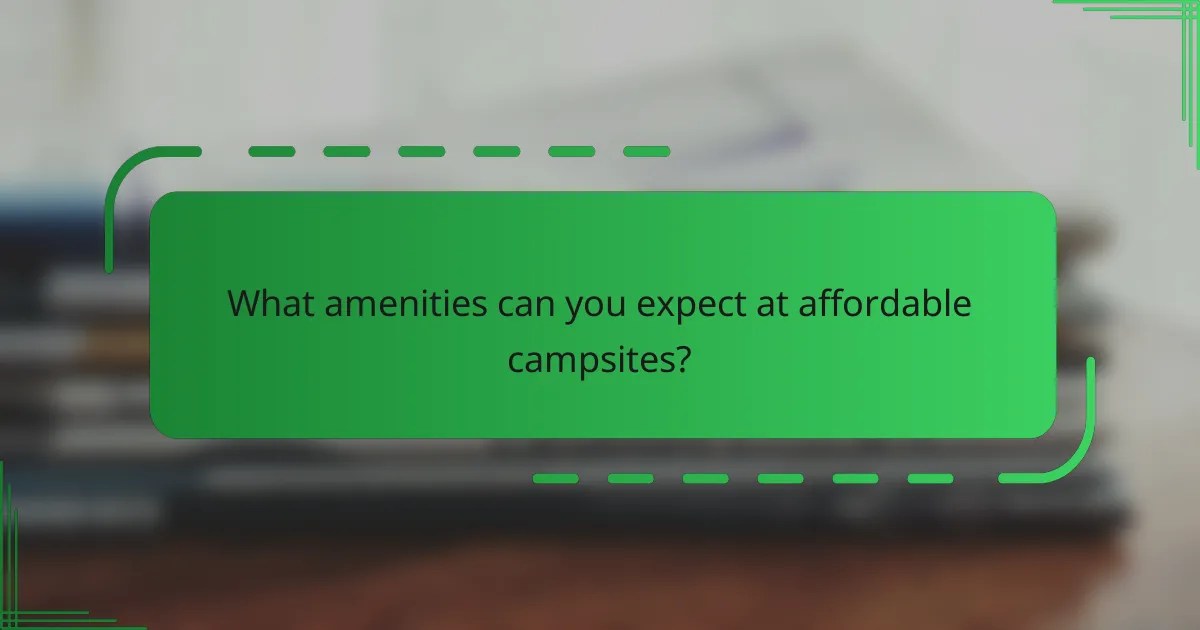
What amenities can you expect at affordable campsites?
Affordable campsites typically offer a range of basic amenities designed to enhance your outdoor experience without breaking the bank. These amenities can vary widely depending on the location and type of campsite, but you can generally expect essentials that cater to comfort and convenience.
Basic amenities
Basic amenities at affordable campsites often include restrooms, potable water, and picnic tables. Many sites also provide fire pits or grills for cooking, which can be a great way to prepare meals outdoors. Some campsites may charge a small fee for electricity or Wi-Fi, while others might offer these services for free.
When choosing a campsite, consider the availability of these basic amenities to ensure a comfortable stay. Look for sites that clearly list their offerings online or in brochures to avoid surprises upon arrival.
Family-friendly features
Family-friendly campsites often include features such as playgrounds, organized activities, and family restrooms. These amenities make it easier for families to enjoy their time together while ensuring safety and convenience for children. Some campsites even offer educational programs about nature and wildlife.
When selecting a family-friendly campsite, check for proximity to hiking trails or water activities that can engage children. Look for reviews from other families to gauge the suitability of the site for kids.
Pet-friendly options
Many affordable campsites welcome pets, providing designated areas for them to roam and play. Pet-friendly campsites may include amenities such as dog parks, pet waste stations, and even pet-friendly cabins or lodges. Always check the specific pet policies, as some sites may have restrictions on breeds or sizes.
When planning a trip with pets, ensure you bring necessary supplies like leashes, food, and water bowls. Researching pet-friendly trails and activities nearby can also enhance your camping experience.
Accessibility features
Accessibility features at affordable campsites can include wheelchair-accessible restrooms, paved paths, and designated parking spaces. Some campsites are designed to accommodate individuals with mobility challenges, ensuring that everyone can enjoy the outdoors. Look for sites that provide detailed descriptions of their accessibility options.
When selecting a campsite, consider contacting the management to inquire about specific accessibility features. This can help ensure that your needs are met and that you have a comfortable camping experience.
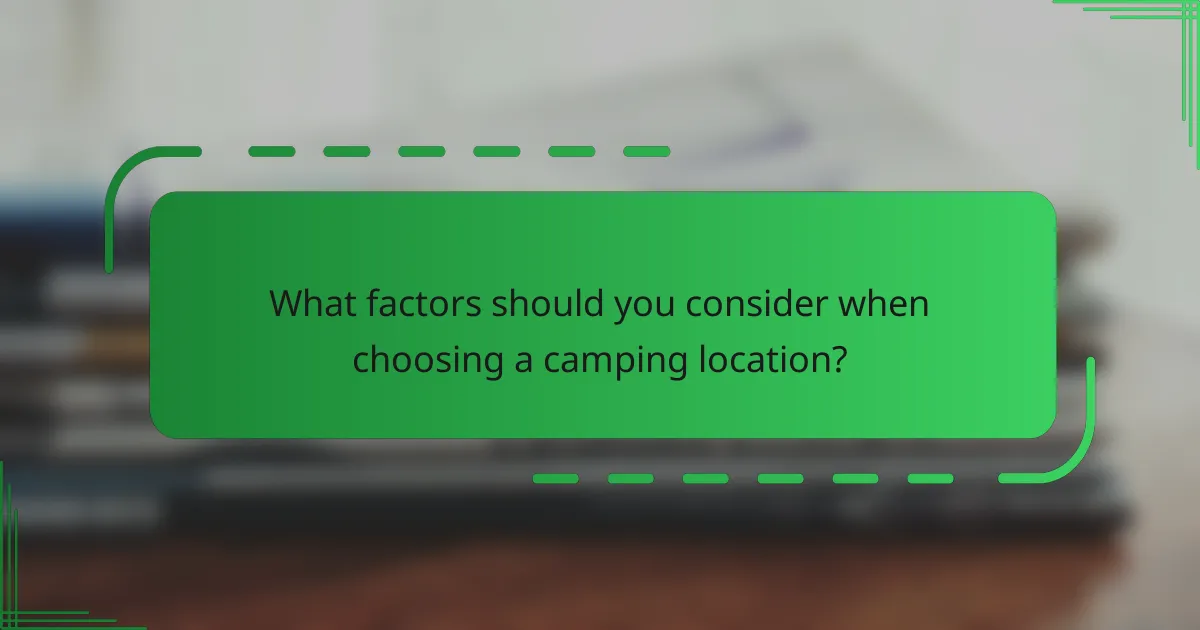
What factors should you consider when choosing a camping location?
When selecting a camping location, consider proximity to attractions, seasonal weather conditions, and safety and security. These factors will significantly influence your overall experience and comfort during your camping trip.
Proximity to attractions
Choosing a camping site near attractions can enhance your outdoor experience. Look for locations that offer easy access to hiking trails, lakes, or national parks, which can provide additional activities and sightseeing opportunities.
Consider the distance to popular attractions; ideally, you want to be within a short drive or a reasonable hiking distance. This way, you can maximize your time enjoying both nature and local points of interest.
Seasonal weather conditions
Seasonal weather conditions play a crucial role in your camping experience. Research the typical weather patterns for your chosen location during your intended camping dates, as temperatures and precipitation can vary widely.
For example, summer camping in the mountains may offer cooler temperatures, while coastal areas could be warmer. Always prepare for unexpected weather changes by packing appropriate gear, such as rain jackets or extra layers.
Safety and security
Safety and security are paramount when selecting a camping location. Investigate the area’s crime rates and ensure that the campsite has adequate safety measures, such as well-maintained facilities and emergency services nearby.
Additionally, familiarize yourself with local wildlife and potential hazards, such as unstable terrain or extreme weather. Always inform someone of your camping plans and consider bringing a first aid kit for emergencies.
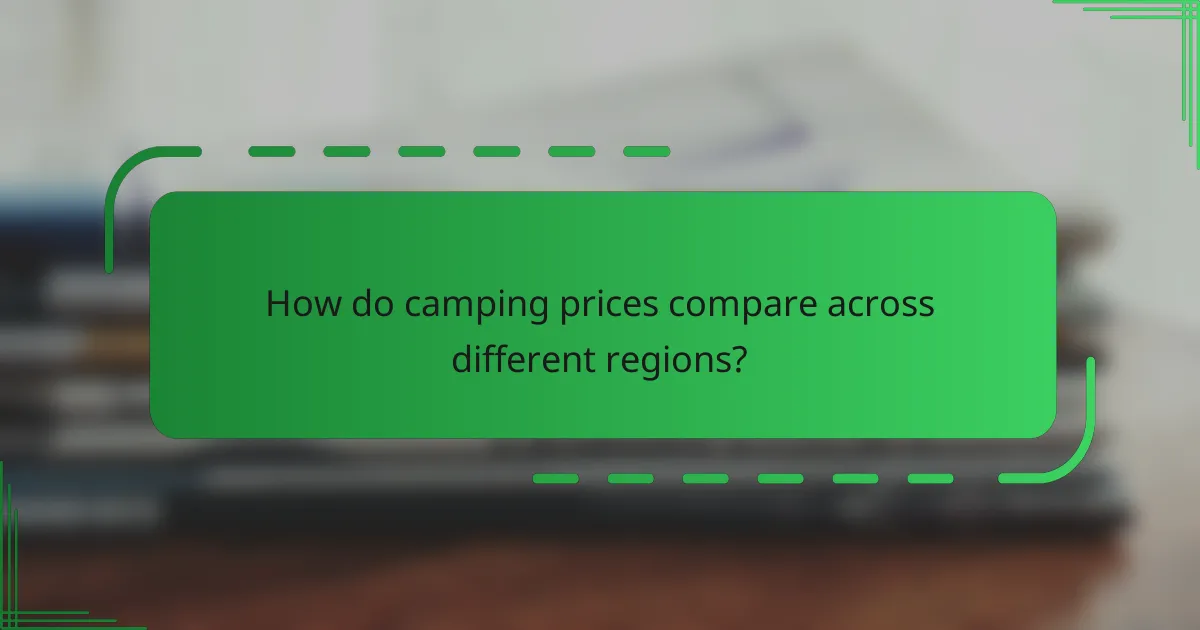
How do camping prices compare across different regions?
Camping prices vary significantly across different regions, influenced by factors such as location, amenities, and seasonal demand. Generally, coastal areas tend to be more expensive than inland sites, with prices often reflecting the popularity of the destination.
East Coast vs West Coast
The East Coast typically offers a range of camping options, with prices often ranging from $20 to $60 per night for basic sites. Popular destinations like Acadia National Park or the Great Smoky Mountains may charge higher fees, especially during peak seasons.
In contrast, the West Coast can be pricier, with many campgrounds charging between $30 and $80 per night. Iconic locations such as Yosemite or Joshua Tree National Park often see higher rates due to their popularity and limited availability.
Midwest pricing trends
Midwest camping prices are generally more affordable, with many campgrounds offering rates from $15 to $50 per night. State parks and local campgrounds often provide basic amenities at lower costs, making them attractive for budget-conscious campers.
However, popular areas like the Wisconsin Dells or the shores of Lake Michigan can command higher prices during the summer months, sometimes reaching $60 or more per night. It’s advisable to book early to secure the best rates in these sought-after locations.
